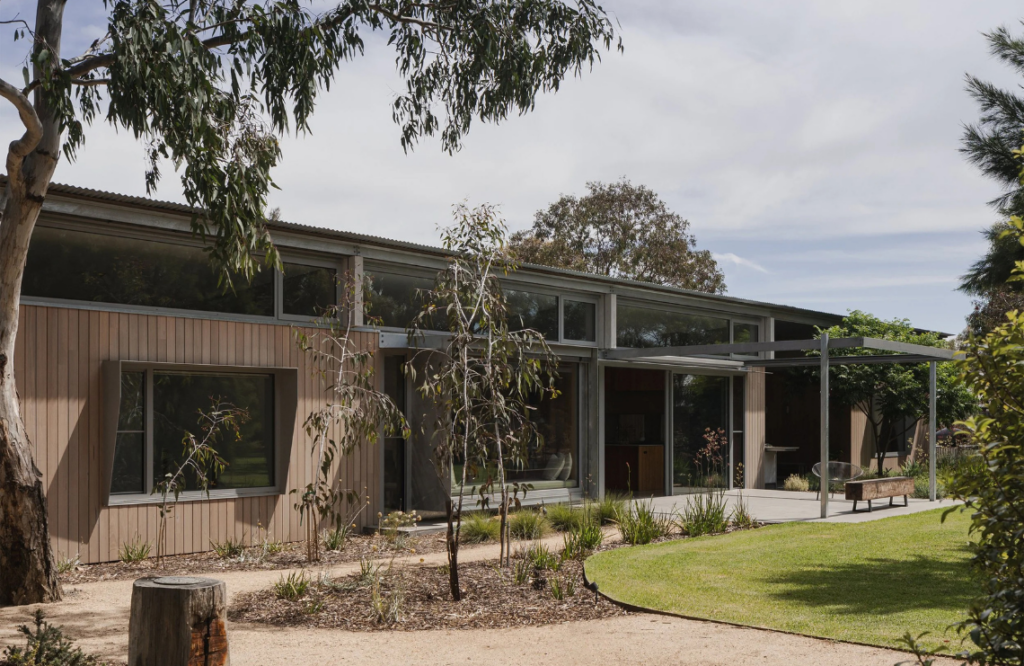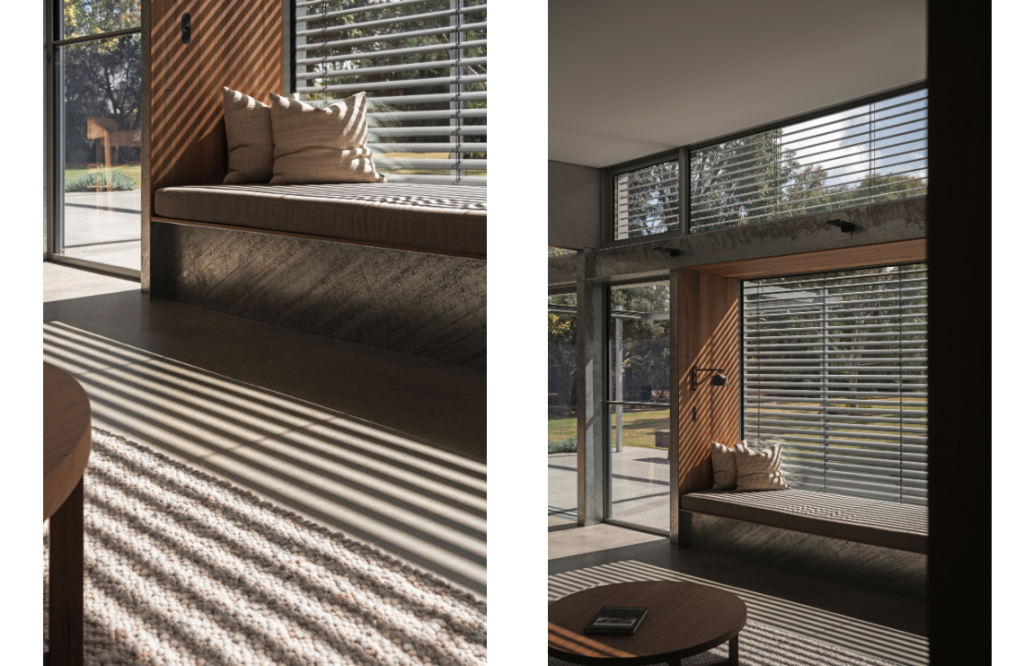In Australian residential architecture, performance is as important as appearance. Forest Road House by Wiesebrock Architecture exemplifies a considered approach, where design and climate responsiveness work hand in hand.
A Home Built on Considered Design
On a one-acre block north of Geelong in Country Victoria, this 280-square-metre residence was designed for a semi-retired couple caring for their daughter with special needs.

Richard Wiesebrock, Director of Wiesebrock Architecture, shaped the floor plan around the homeowners’ lifestyle while integrating environmental performance. Winter sun provides natural heating, while summer shading maintains comfort and reduces reliance on mechanical cooling.
The home’s defining feature is its rammed-earth spine, crafted from local You Yangs quarry material. Acting as a thermal mass, it absorbs winter warmth during the day and radiates it throughout the night, helping stabilise temperatures year-round. Its effectiveness is maximised when paired with responsive shading and ventilation, which enable the building to actively manage heat.

Why External Shading was Selected
Internal blinds and curtains provide privacy, heat still penetrates glazing. External shading was chosen at Forest Road House to help manage solar gain while complementing the home’s design.
Shade Factor’s Warema external venetian blinds are installed across the northern façade, balancing form and function. On hot days, they limit solar exposure, reducing heat gain through glass by up to 90%, depending on the glazing. On cold days, they retract to admit sunlight deep into the home, warming the rammed earth wall and supporting passive heating.

The outdoor entertaining space is an open terrace that extends the living area. Wiesebrock selected the Warema Perea P40 pergola awning from Shade Factor to integrate with the architecture. The pergola’s steel structure was built to match the lines and materiality of the façade, while the awning itself remains conceals when not in use, becoming visible only when deployed to provide shade and light rain protection. This ensures the terrace remains open and visually connected to the home, while the shading is fully integrated into the design.

Collaboration from Concept to Detail
Wiesebrock Architecture demonstrates the value of integrating materials and systems from the earliest design stage. By collaborating with Shade Factor from concept, shading works with the façade and architectural vision rather than as an add-on. Forest Road House shows how considered, coordinated decisions create a home where every element serves both performance and beauty.























